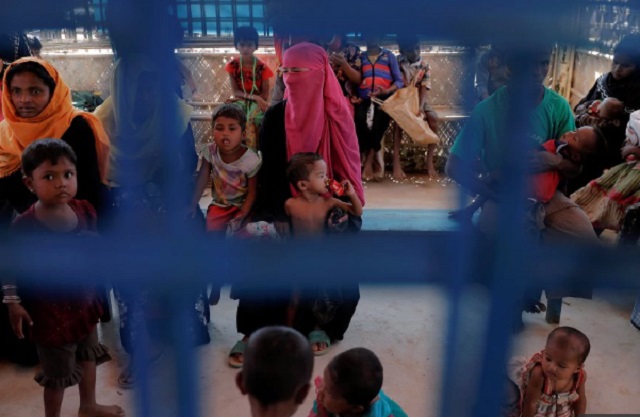
Nearly 40 million more women and girls use modern contraceptives now compared to five years ago across 69 countries in Africa, Asia, and Latin America, according to a report by advocacy group Family Planning 2020 (FP2020).
Family planning is a key tool for reducing poverty since it frees up women to work and leads to smaller families, allowing parents to devote more resources to each child's health and education, experts say.
Around a third of married women use contraceptives in Pakistan
Condoms, birth control pills and other contraceptive methods have prevented 84 million unintended pregnancies, 26 million unsafe abortions and 125,000 maternal deaths in the past year alone, FP2020 said.
"What we're seeing is more rapid change... across all the countries," said Beth Schlachter, executive director of FP2020, in a telephone briefing.
More than half of the new contraceptive users were in Asia, where 38 per cent of women of reproductive age use modern birth control, FP2020 estimated.
In Africa, the rate of contraceptive use increased to 23.4 per cent from 19.5 per cent from 2012 to 2017, the report said.
However, the future of some family planning projects is in doubt since US President Donald Trump reinstated a policy this year blocking US funding to overseas groups that perform or provide information about abortion, it added.
World Population Day: Contraception a no-go area for most women
International donors vowed to fill the gap and pledged $207 million at a summit on family planning in July, but the UN Population Fund (UNFPA) said it needs an additional $700 million by 2020, without which it will have to cut services.
At least 214 million women in developing countries lack access to birth control - resulting in 89 million unintended pregnancies and 48 million abortions a year, according to UNFPA.
"There may be uncertainties on the horizon, but our community's dedication to women and girls is stronger than ever," said Natalia Kanem, UNFPA's executive director, in a statement accompanying the report.
The FP2020 initiative started in 2012 with the goal of enabling 120 million more women and girls in developing countries to use modern contraceptives by the year 2020.





1732354127-0/Untitled-design-(3)1732354127-0-270x192.webp)


1732344836-0/BeFunk_§_]__-(37)1732344836-0.jpg)








COMMENTS
Comments are moderated and generally will be posted if they are on-topic and not abusive.
For more information, please see our Comments FAQ